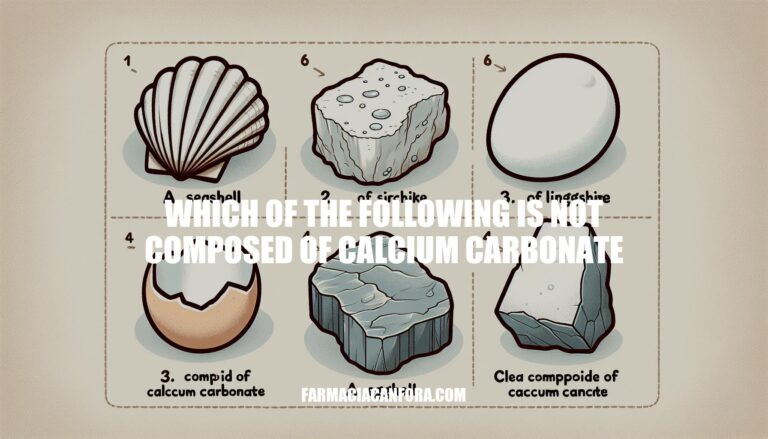Calcium carbonate is a common compound found in various natural substances like limestone, marble, and seashells. However, not all materials contain this compound. Identifying substances that do not contain calcium carbonate is crucial in fields like geology, construction, and environmental science. For instance, knowing that calcined gypsum is composed of calcium sulfate rather than calcium carbonate can influence its use in building materials. This distinction helps in selecting the right materials for specific applications and understanding their properties and behaviors.
Understanding Calcium Carbonate
Calcium carbonate is a chemical compound with the formula CaCO₃. It consists of one calcium (Ca) atom, one carbon © atom, and three oxygen (O) atoms.
Common substances composed of calcium carbonate include:
- Chalk
- Limestone
- Marble
- Eggshells
- Shellfish skeletons
- Pearls.
Identifying Non-Calcium Carbonate Substances
To determine if a substance is not composed of calcium carbonate (CaCO₃), several criteria and methods are used:
-
Chemical Tests:
- Acid Test: Calcium carbonate reacts with acids, such as hydrochloric acid, to produce carbon dioxide gas. If no reaction occurs, the substance likely does not contain CaCO₃.
- Solubility Test: Calcium carbonate is insoluble in water but soluble in acids. Testing solubility can help identify its presence.
-
Physical Properties:
- Hardness: Calcium carbonate has a specific hardness on the Mohs scale. Comparing the hardness of the substance with known values can indicate its composition.
- Density: Measuring the density and comparing it with the known density of calcium carbonate can help determine its presence.
-
Spectroscopic Methods:
- X-ray Diffraction (XRD): This technique identifies crystalline structures. Calcium carbonate has distinct diffraction patterns.
- Infrared Spectroscopy (IR): IR spectra can detect the characteristic carbonate ion absorption bands.
-
Microscopic Examination:
- Polarized Light Microscopy: This can reveal the birefringence properties of calcium carbonate crystals.
These methods collectively help in identifying substances that do not contain calcium carbonate.
Examples of Non-Calcium Carbonate Substances
Here are some specific examples:
-
Quartz (SiO₂)
- Chemical Composition: Silicon dioxide
-
Gypsum (CaSO₄·2H₂O)
- Chemical Composition: Calcium sulfate dihydrate
-
Halite (NaCl)
- Chemical Composition: Sodium chloride
-
Bauxite (Al₂O₃·2H₂O)
- Chemical Composition: Hydrated aluminum oxide
-
Pyrite (FeS₂)
- Chemical Composition: Iron sulfide
-
Dolomite (CaMg(CO₃)₂)
- Chemical Composition: Calcium magnesium carbonate (note: different from calcium carbonate)
-
Calcined Gypsum (CaSO₄·0.5H₂O)
- Chemical Composition: Calcium sulfate hemihydrate
Identifying Substances Without Calcium Carbonate
Identifying substances that do not contain calcium carbonate is crucial in various fields, including geology, construction, and environmental science.
To determine if a substance is not composed of calcium carbonate, several methods are used:
- Chemical tests (acid test and solubility test)
- Physical properties (hardness and density)
- Spectroscopic methods (X-ray diffraction and infrared spectroscopy)
- Microscopic examination
These methods help identify substances like:
- Quartz
- Gypsum
- Halite
- Bauxite
- Pyrite
- Dolomite
- Calcined gypsum
The knowledge of these substances is significant as it influences their use in building materials and understanding their properties and behaviors.


